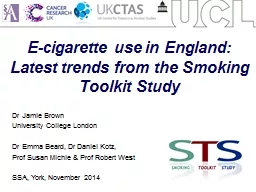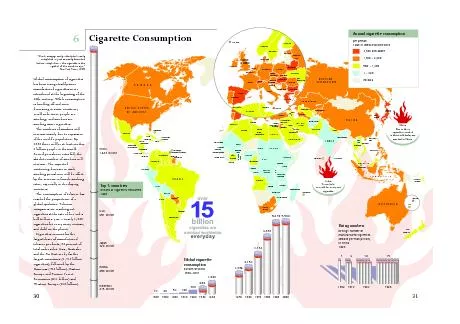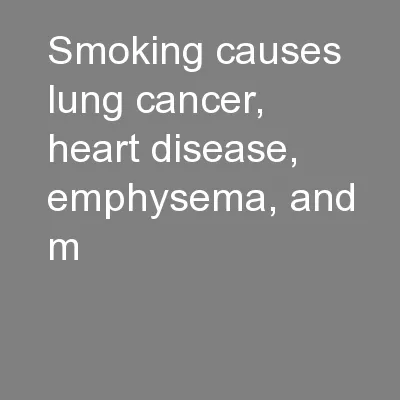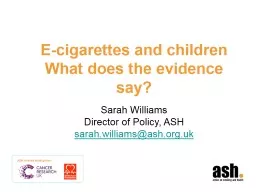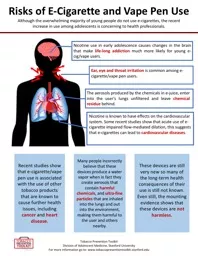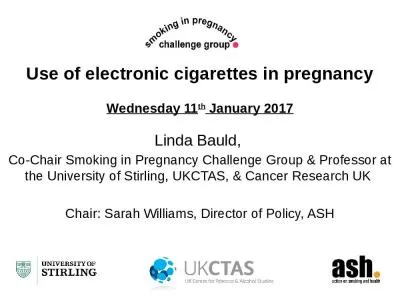PPT-E-cigarette use in England: Latest trends from the Smoking Toolkit Study
Author : tatyana-admore | Published Date : 2018-11-05
Dr Jamie Brown University College London Dr Emma Beard Dr Daniel Kotz Prof Susan Michie amp Prof Robert West SSA York November 2014 Financial disclosure Funding
Presentation Embed Code
Download Presentation
Download Presentation The PPT/PDF document "E-cigarette use in England: Latest trend..." is the property of its rightful owner. Permission is granted to download and print the materials on this website for personal, non-commercial use only, and to display it on your personal computer provided you do not modify the materials and that you retain all copyright notices contained in the materials. By downloading content from our website, you accept the terms of this agreement.
E-cigarette use in England: Latest trends from the Smoking Toolkit Study: Transcript
Download Rules Of Document
"E-cigarette use in England: Latest trends from the Smoking Toolkit Study"The content belongs to its owner. You may download and print it for personal use, without modification, and keep all copyright notices. By downloading, you agree to these terms.
Related Documents

